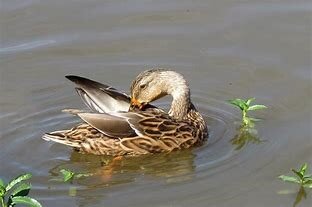Discipline: Life Science
Age Range: 5+
Estimated Time: 5-10 minutes
What you need: Bird feathers activity sheet which can be downloaded from the link below (or a piece of paper), a crayon, water
Instructions:
https://farm9.staticflickr.com/8034/8019846243_ee307523f5_z.jpg
Put a droplet of water on the first feather on your Bird Feather Activity Page (or if you don’t have the activity page, draw the outline of a bird feather on a piece of paper and put a droplet of water on your paper). Observe what happens to the water.
Color the second feather on your Bird Feather Activity Page with crayon. Make sure to color it in completely. If you don’t have the Bird Feather Activity Page, draw a second bird feather on your piece of paper and color it in with your crayon.
Put a droplet of water on your second feather and observe what happens.
Did the same thing happen with the water on the two different feathers? What was different? Why do you think that happened?
Have you ever stood outside in the rain wearing a sweatshirt? You may have noticed that your sweatshirt absorbed water and quickly became very wet and heavy! Why don’t ducks get soaked with water when they spend so much time in the water? The reason is that ducks have a special gland at the base of their tail called the uropygial gland. This gland produces oil which the ducks then spread all over their body. Have you ever seen a duck that looks like it is biting at its feathers? That is called preening, and that is how the duck spreads the oil. The oil repels the water and allows ducks to stay dry. In our experiment, the wax represented the oil on the duck feathers. You may have noticed that when you put water on the feather without crayon it was able to absorb into the paper. What happened when you put water on the feather with the crayon? That’s right, the water stayed on top of the feather and did not absorb! Can you think of any other birds that might have a uropygial gland?

